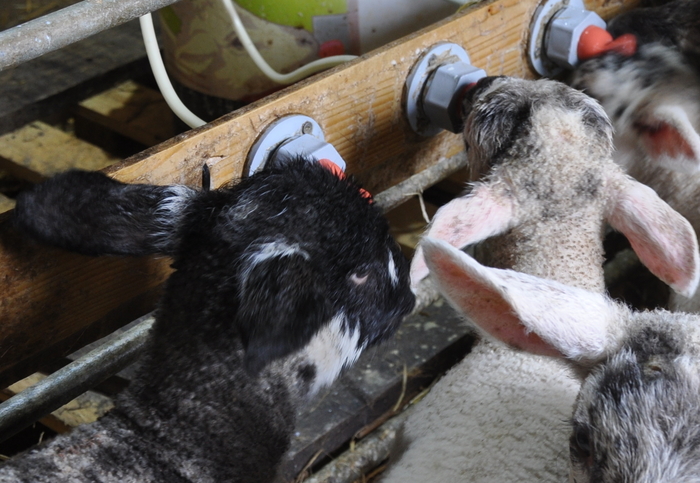Surplus lambs reared on performance-formulated lamb milk replacer, based on whey protein from cow’s milk, do just as well as lambs running naturally with the ewe.
A study carried out at IBERS, Aberystwyth University, reports that the use of a colostrum alternative followed by good quality lamb milk replacer facilitates the successful rearing of surplus lambs. Lambs reared on milk replacer reached similar weaning weights to their naturally-reared counterparts and, when killed out, both carcass weight and conformation were comparable to that of lambs reared on the ewe, despite a slightly lighter body weight at slaughter.
“The results of this trial clearly show that sheep farmers should be confident about rearing surplus lambs on performance-formulated lamb milk replacer, provided care is taken to maximise rumen development before weaning for lambs reared on an ad libitum system,” said Volac research scientist Dr Jessica Cooke.
The results will be encouraging for the many sheep producers who have invested recently in automatic feeding of surplus lambs.
“Enquiries about automatic milk feeding are at an all-time high in the sheep sector. Like calf rearers, farmers are undoubtedly attracted by the labour-saving benefits and the fact that machine-rearing frees up time to focus on other important jobs. But they also report faster growth rates because there is no limit to how much or when the lambs can drink,” said Volac nutritionist Abi Erian.
Ms Erian added that it makes good sense to plan ahead for lambing this season and re-examine current surplus lamb rearing practices. “Basically, you have three options come lambing time: you either sell your extra lambs to someone else to rear, foster your surplus lambs onto a single-bearing ewe or artificially rear them on milk replacer.
“If you intend to rear as many as you can to maximise your finished lamb sales, it’s good practice to take any third and fourth lambs off their mothers. This will help boost lamb survival rates and performance, and take the pressure off ewes trying to rear multiples. This is particularly important for young mothers and will help her keep growing and producing enough milk for the lambs she has left.”
When deciding which lamb to remove from a triplet-bearing ewe, Ms Erian advised removing either the smallest or the largest one to leave a balanced pair. “Whichever lamb is chosen it must be sucking well, been with its mother for 24 hours after birth and have received a good supply of colostrum, particularly in the first six hours of life.”
However, Volac stressed that machine rearing, whilst saving substantial time and rearing hassle, is certainly no substitute for good husbandry.
“The IBERS trial highlighted the importance of maximising rumen development while rearing surplus lambs on ad libitum milk replacer. But sound hygiene is also crucial and lamb pens must be draught-free, and well drained and bedded to keep lambs as warm and dry as possible. In addition, clean, fresh water must be made available along with creep feed (18% crude protein) offered ad lib to encourage early intake. Follow these guidelines and you can be confident in rearing those extra lambs highly cost-effectively with margins of £15-£25 a lamb being achievable (over lifetime feed cost), based on previous years’ lamb prices,” Dr Cooke said.


